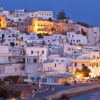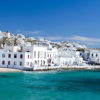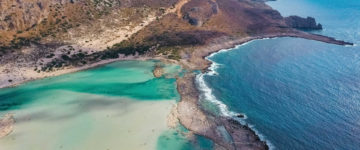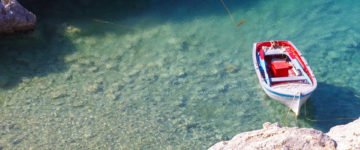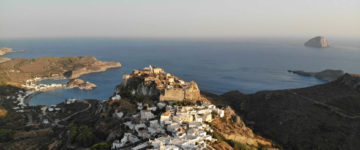
Andros, the second-largest island of the Cyclades, is a walker’s paradise. Its wild mountains are cleaved by fecund valleys with trilling streams and ancient stone mills. On this lush island, springs tend to be a feature of each village and waterfalls cascade down hillsides most of the year. It’s worth to get out to the footpaths, many of them stepped and cobbled, that will lead you through these majestic landscapes and among its copious wildflowers and fascinating archaeological remnants. The handsome main town of Hora, also known as Andros, is a ship owners’ enclave packed with neoclassical mansions.
Αndros, the second largest and northernmost of the Cyclades, is also one of the most verdant, making it a great place for serious walkers.
On the positive side, the permanent population is distinctly hospitable. Together with the attractive capital, Hora, and some idiosyncratic reminders of the Venetian period, such as the peristerones (dovecote towers) and the frachtes (dry-stone walls, here raised to the status of an art form), this friendliness lends Αndros its charm. In addition, the island has numerous beaches, including some of Greece’s best, with more than sixteen on the northwest and north coast only accessible by boat or long dirt track. For walkers, the island has twelve numbered, waymarked paths, varying from 1.7 to 11.5km, though not all are well-maintained and some need transport arrangements for the return.
Andros is the northernmost island of the Cyclades archipelago in Greece, approximately 6 miles south east of Euboea, and about 2 miles north of Tinos. The specific geographical coordinates are 37°50’45.0″N 24°55’57.7″E in Aegean Sea.

